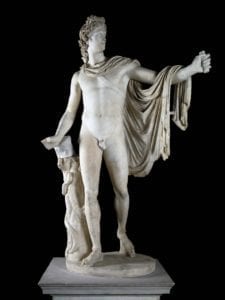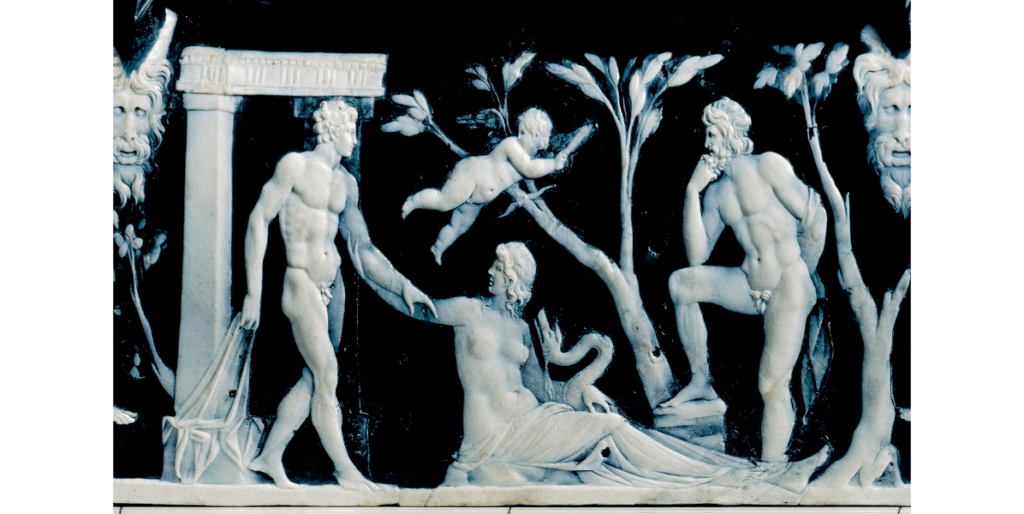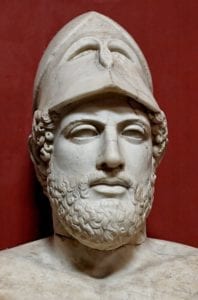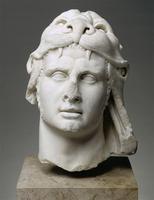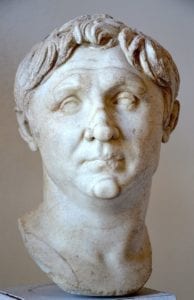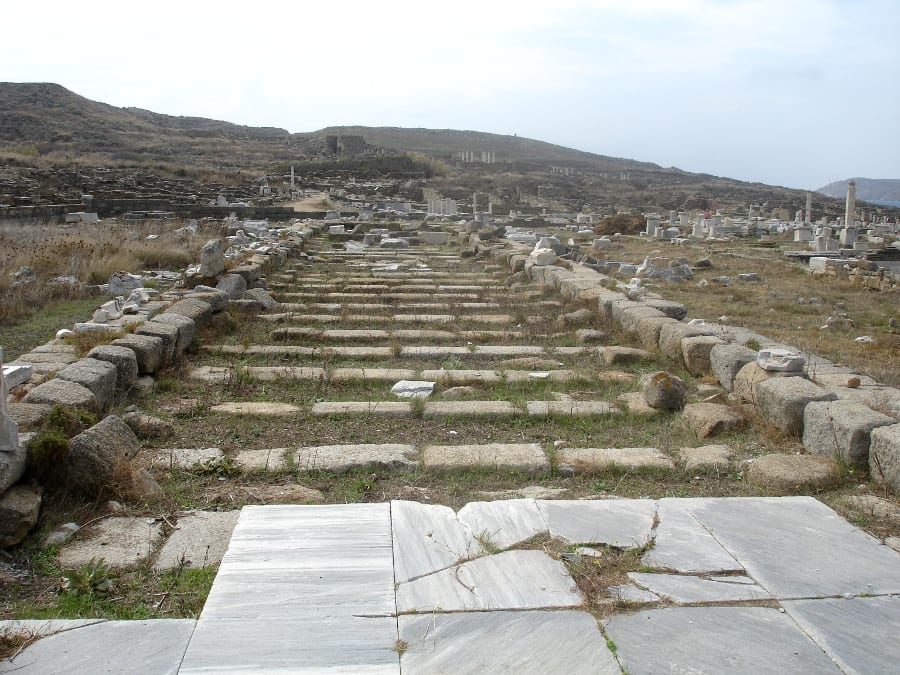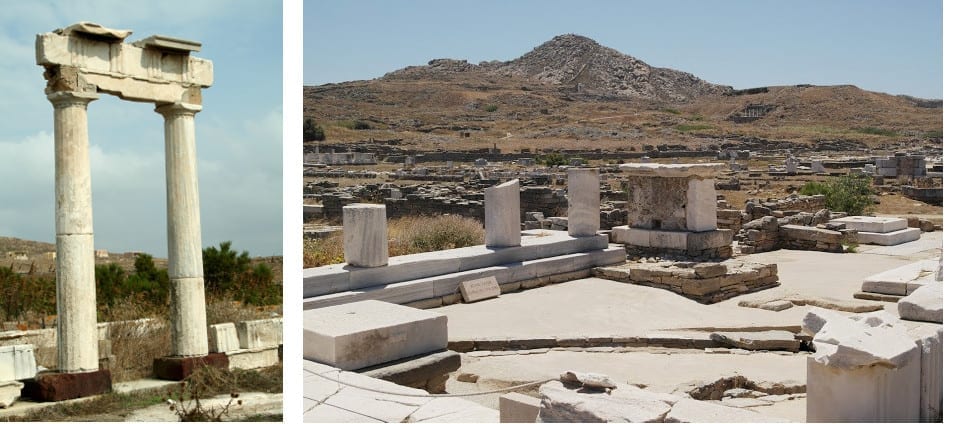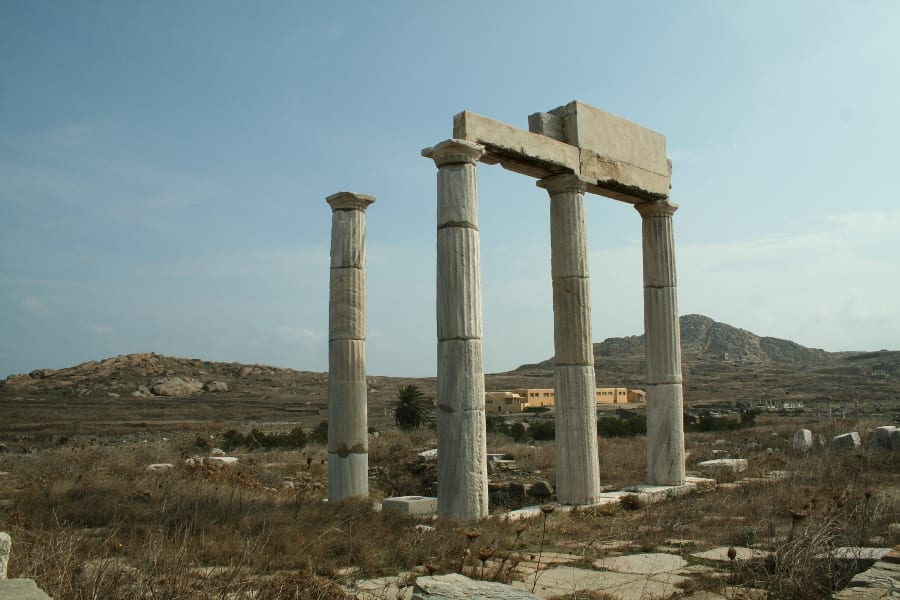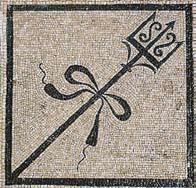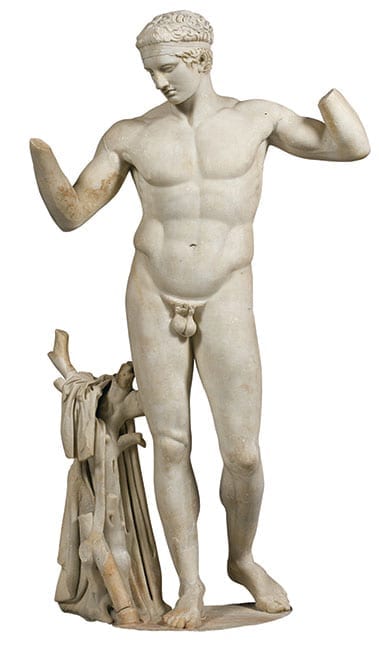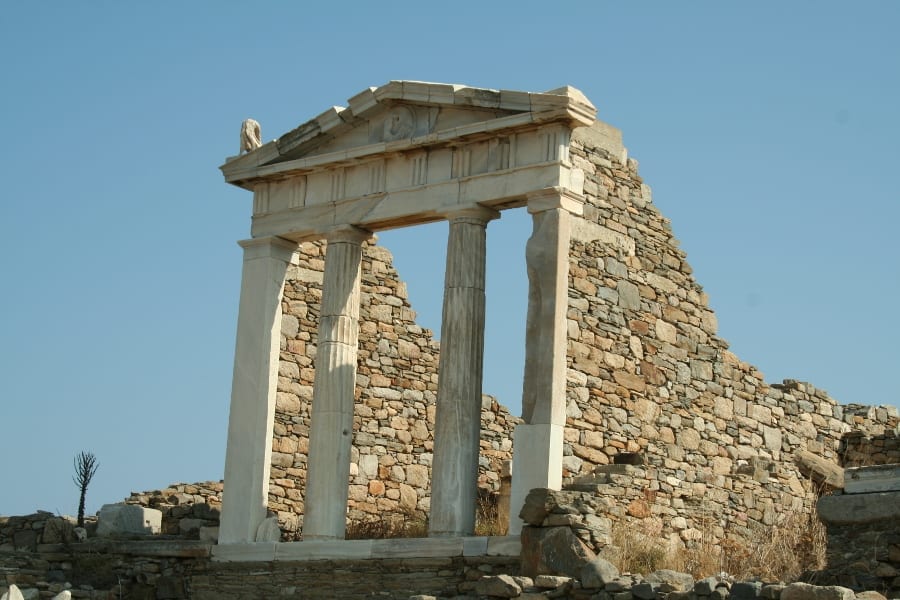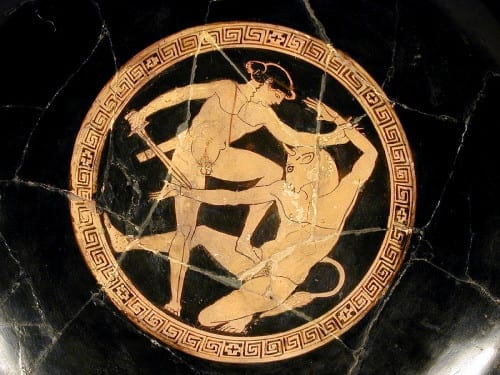Delos approfondimenti
delos in-depth
Delos – In-depth
apollo
Apollo was one of the main gods of the Greek world. Son of Zeus and Leto, he was the god of the Sun, protector of the arts, poetry and music. Apollo was also associated with the gift of prophecy and, with an oracular function, he was celebrated in the sanctuaries of Delphi and Delos. Throughout the epic is the protector of the Trojans.
The cult of Apollo is also attested in Rome at least from the 5th century B.C., but it became particularly important during the Principality of Augustus. The emperor, indeed, recognized in the favor of Apollo the reason for the victories against political opponents and the power obtained. Just to celebrate the victory against Sextus Pompeius at Nauloco in 36 B.C. and the victory against Marcus Antonius at Actium in 31 B.C., Augustus had a temple of Apollo erected on the Palatine, in his property. Moreover, to seal the bond some literary sources claim that the emperor was the son of the god: Actia, the mother of Augustus, would have been fecundated by Apollo in the form of a serpent and the union of the two would have been born, as Suetonius tells, a “ray of sun”.
Delian-Attica League
The Delian-Attica League was a confederation of Greek cities established in 478/477 BC, after the victory at Salamis, with the aim of countering the invasion of the Persians. It comprised between 150 and 173 cities, placed under the general direction of Athens, required to pay an annual tribute for the support of war expenses. The seat of the League was Delos, at whose sanctuary Apollo was held congresses and where the treasure deriving from the tributes was kept. Although the confederation initially considered equal all the cities, over the years Athens assumed an hegemonic power over the other centers and the League became a sort of “empire”. Pericles in 454 B.C. transferred the treasure to Athens and, from that moment on, all the events that characterized the confederation until its dissolution – in 404 B.C.- depended on the political aims of this city.
Pirates
The devastations of Delos in 88-86 B.C. and 69 B.C. fit into the historical context of the Mithridatic Wars, three conflicts fought between Rome and Mithridates VI, king of Pontus, in the period between 89 B.C. and 63 B.C. Mithridates, In his expansionist policy of conquering Roman territories in Asia Minor and giving them “liberation”, not only used his army but allied himself with the pirates who had long infested the Aegean Sea.
With the support of Mithridates the pirates increased considerably in number, reaching the share – according to Plutarch – of at least 1000 ships and plundering more than 400 cities and sanctuaries. Particularly worrying were the attacks against the Roman trade hubs – including the “free port” of Delos – and on the sites for the production of wheat destinated to Rome.
Among the actions of the Romans to stop the raids, is particularly famous the Pirate War of Pompey, held in 67 BC, which allowed to finally overthrow the bands in just forty days, conquering the areas that constituted their lairs: Crete, the coasts of Lycia, Pamphylia and, above all, Cilicia.
Three temples
In the sanctuary of Apollo there are three temples dedicated to the god. The oldest, dated to the second half of the 5th century BC and attributed to the Athenian tyrant Pisistrato, is called “the poros temple” due to the material used for its construction. It consisted of an entrance porch with two Ionic columns on the front, which brought to the cell in which a statue of Apollo, the work of two artists of Naxos, was preserved.
The second building, instead, is known by the name of “Great Temple” and it was peripteral, Doric, hexastyle. Its construction probably began when Delos became the seat of the Delian-Attica League (478/477 BC), but it was suspended in 454 BC, on the occasion of the transfer of the treasury of the League to Athens. Once the island was freed from the Athenian yoke, the construction resumed in 314 B.C. but was never completed.
The third structure, finally, is called “Temple of the Athenians” or “Temple of the Seven Statues”: it was a hexastyle amphiprostyle building of Doric order, inaugurated by the Athenian commander Nicias in 417 B.C. The reference to the seven statues would come from the fact that inside were lodged seven images of divinity, placed on a single curved base.
Monument of the Bulls
The Monument of the Bulls is an elongated building, located in the eastern sector of the sanctuary of Apollo. Its name derives from some architectural decorations depicting the protome taurine, but the characteristic element is its link with the sea: it was, indeed, a Neorion, a structure used to house a ship. In this case, the boat was dedicated to Apollo to celebrate a victory.
Traditionally it is believed that the dedication was commissioned by the Macedonian king Antigono Gonata to celebrate the victory against Ptolemaic Egypt off Kos, which occurred between 262 B.C. and 255 B.C. However, the stylistic analysis of the monument would lead to consider the structure as older: it could be a work by Demetrius Poliorcete, the father of Antigonus, to honour his naval victory at Salamis of Cyprus in 306 BC, or an Athenian dedication from the period between 330 and 315 BC.
Oikos of Nassi
The Oikos of Nassi is placed in the southwestern sector of the sanctuary of Apollo. Located in an area rich in monuments dedicated by the inhabitants of Naxos, including the so-called Colossus and the stoa, this building is generally considered a “treasure” – a place where the Nassi deposited their offerings to Apollo – but its original function as a temple of the god is not excluded.
The structure was established in the 7th century B.C. and originally consisted of an entrance hall and a central body divided into two naves by a row of columns. Around the middle of the 6th century B.C. a portico (prostòon) was added along the eastern edge of the building.
The complex was entirely made of Nassio marble and it would have had the first marble roof attested to Delos. In the wake of this hypothesis, it was attempted to associate the realization of the coverage of the oikos to Byzes, the Nassian craftsman who would have invented this type of roof.
Agorà degli Italici
The Agorà degli Italici is a large square placed between the sanctuary of Apollo and the Sacred Lake. It consists of a large uncovered central space surrounded on the four sides by a boundary wall and a two-storey porch. Among the environments stand out particularly an entrance propyl, along the western edge, and a spa complex in the northern sector. On the central courtyard there are also numerous niches housing statues and other celebratory decorations, while the rooms identified as warehouses have the entrance facing outwards.
The complex is dated between the end of the second and the beginning of the first century B.C. and it is part of the historical picture of the transformation of Delos into a “free port” operated by the Romans in 166 B.C.
It is believed that this agora was the seat of merchants from Italy, as demonstrated by dedicatory inscriptions found – bearing the names of evergetus mainly of this geographical origin – but there are other proposals for use: the place where the slave market was held – for which Delo was particularly famous – or an area dedicated to sports activities.
Seat of the Poseidoniasti of Beirut
The existence of a Seat of the Poseidoniasti of Beirut is a clear demonstration of the cultural variety that characterized the center of Delos, in particular after 166 B.C. This complex was the reference place of a group of merchants who, Under the protection of Poseidon and the other gods, had formed an association of merchants, shipowners and depositories, as stated in the dedicatory inscription.
The structure was already under construction in 153/152 B.C. and consists of several functional areas: in the North-West there is an uncovered court (probably for the conduct of commercial transactions); in the North-East, instead, there is a peristyle with a central cistern; To the south there were lodgings.
The western side was occupied by a sacred area with four rooms. Three of them housed, respectively, the sacred images of the goddess Rome – demonstrating the good relations between this city and the merchants of Beirut – of Poseidon and Astarte.
Houses
In the archaeological area of Delos are preserved the remains of numerous luxury houses. Most of them were built between the second century B.C. and the beginning of the first century B.C., when the island became a “free port” and welcomed an exponential number of merchants from all over the central-eastern Mediterranean. The sumptuousness of the residences and the economic availability of the owners is demonstrated both by the articulation of the complexes – most of which equipped with a central peristyle on which they opened different environments, and sometimes developed even on several floors, as in the case of the House of Hermes – both from the decorative apparatuses. Many of the houses, indeed, are named on the basis of the very fine mosaics extraordinarily well preserved – such as the House of the Dolphins, the House of the Masks and the House of the Trident- or of sculptures found in them, including the House of Hermes and the House of Diadumeno.
Foreign gods
The Terrace of the foreign gods is a vast area that housed a sanctuary dedicated to the Syriac gods and the largest place of worship of the Egyptian gods attested to Delos: Serapeion C.
The sanctuary of the Syriac deities was dedicated to the goddess Atargatis (assimilated to the Greek Aphrodite) and to the god Hadad (identified as Zeus) and it was built at least from the middle of the second century B.C. The complex consists of a porch that allowed the access to a terrace on which there was a small theater: here it was possible to gather about 400 people and to carry out practices related to worship. A series of other rooms completed the structure, initially conceived as a private place and which later, between 128/127 and 112/111 BC, became a public seat.
Serapeion C, on the other hand, is an area with two courtyards with colonnaded arcades and four worship buildings built in the early 2nd century B.C. The main deities of the sanctuary were Isis, Serapis and Anubis, but it is believed that in the southern temple was venerated another deity: perhaps Hydreios, the personification of water, given the presence of a large tank in the area of the cell. Nevertheless, Delo hosted at least other two places to worship Egyptian deities, a fact which proves the importance of the interests of the Egyptian merchants supported by the Ptolemies monarchy.
Delie Feasts
Delie Feasts were Penteteric celebrations of very ancient origin. According to tradition, these festivities were instituted by the hero Theseus returning from Crete after defeating the Minotaur: on this occasion the so-called “Crane Dance” would have been performed for the first time to recall the events that took place in the mythical Labyrinth.
The celebrations were reworked by the Athenians after the “purification” of Delos in 426 B.C. and, although it was an event that united all peoples of Ionian ancestry, it always played a predominant role: Choirs of young people went to Delos together with other representatives of the city, the sacrificial victims and offerings, for a party that lasted at least two days and which also included competitions and agonies. In addition, court proceedings and executions were suspended throughout the period.
The prizes for the winners of the specialties consisted of laurel crowns and palm branches. The palm was the plant on which Leto would have leant during childbirth and the symbol of the celebrations, as suggested by the “Palma di Nicia”: a bronze palm dedicated in 417 BC, on the occasion of the procession organized by him.
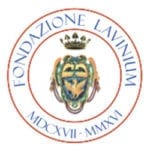

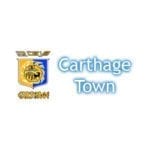
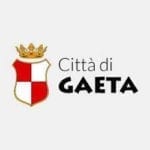
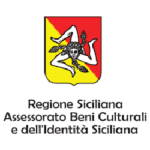

















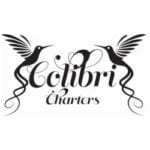


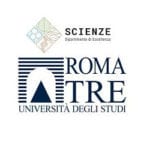
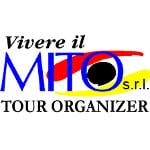
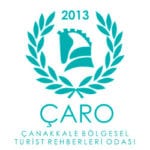
Previous
Next

